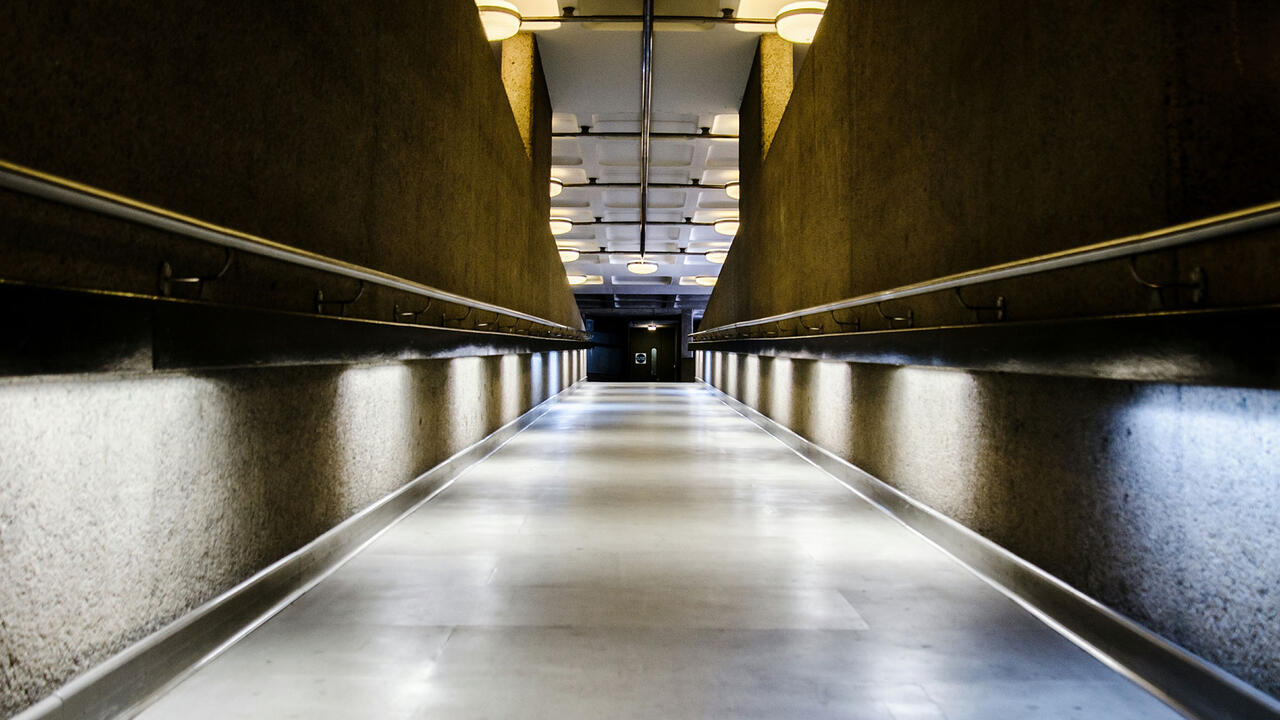Holly Hendry
BALTIC Centre for Contemporary Art, Gateshead, UK
BALTIC Centre for Contemporary Art, Gateshead, UK

Within the self-contained cube of BALTIC’s second-floor gallery, Holly Hendry presents ‘Wrot’ (2017), her first institutional solo show. The venue allows the artist, who graduated from London’s Royal College of Art in 2016, to deploy her sculptural forms on a larger scale than hitherto, moving away from individual pieces and inhabiting the entire space with this multifaceted installation.
Hendry has removed a section of the gallery wall, granting viewers a preview of the exhibition before they actually cross the threshold. In the artist’s vision, the gallery is constituted of much more than wood and paint: the removed section is to be found within the exhibition space, propped up vertically to reveal what purport to be its constituent materials, which include layers of marble, metal and various other substances. With its innards laid bare, the wall becomes an object of interest, its banal functionality transformed into something alien.
The other component of the exhibition is a raised platform, which takes up around half of the floor space. Above it are what look like enlarged teeth or bone fragments that have been exhumed from its murky interior. As with the wall, Hendry presents a cross-section to reveal the building’s curious insides. Here we have marshmallow-like green and blue layers sandwiched between solid grey, all set within pastel-pink walls that accentuate the gently cartoonish environment.

The scene is like an archaeological dig, with fragments of human life – a plug, a plastic bottle, a sock – appearing throughout, embedded like fossils in Hendry’s faux-mineral strata. If, in the distant future, such items are all that remain of the 21st century, how will our society be considered, how insignificant will we seem? Hendry’s excavations provide a light-hearted reminder that the total duration of human life barely registers on the scale of geological time.
Hendry references death more explicitly by including bones, such as human-scale ribs, alongside the other detritus immersed within the surface of the cross-section. Within Hendry’s gooey, pastel-shaded geologies, the bones appear as humorous as they do morbid, bringing to mind Halloween costumes as much as actual remains. So, too, do the oversized sculptural elements suspended above the platform, jutting out from the wall or the floor via piping, which resemble chalky boulders as well as enlarged skeletal fragments. A tooth-shaped structure above the cavity from which it was excavated can’t fail to bring to mind unpleasant dental experiences, an impression reinforced by the fleshy pink of the surrounding walls. Moreover, the untimely removal of a bodily element perceived to be ‘permanent’ highlights the temporality of the flesh and, ultimately, our mortality. Yet, while the tooth’s scale comically exaggerates the image of pain and decay, it also makes it outlandish and alien, introducing an element of body-horror into the display. This is perhaps demonstrative of Hendry’s overall attitude: a pick-and-mix colour scheme lures the viewer into an examination of morbid themes in which geology meets biology, and death and decay are ever-present, yet comically insignificant.
Main image: Holly Hendry, ‘Wrot’, 2017, exhibition view. Courtesy: the artist and BALTIC Centre for Contemporary Art, Gateshead
























